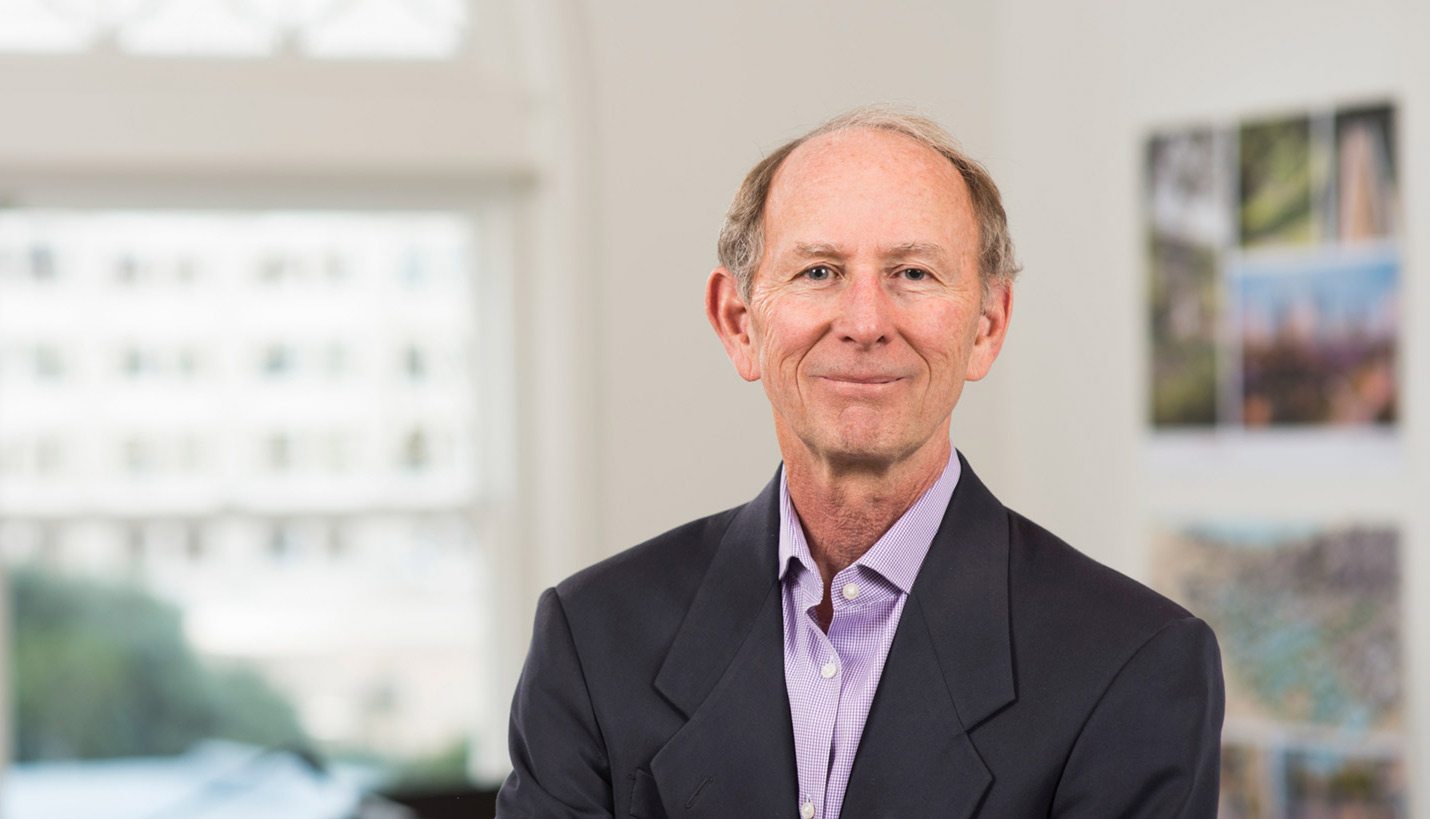

Dan Kenney – Shaping Campuses
Page Principal Dan Kenney, AIA, AICP, was interviewed by Michael Haggans as part of Michael’s video series, “Future of the Campus”, in which he interviews academics, planners and facilities professionals on the challenges and meaning of the physical campus. Michael’s website, campusmatters.net, explores the future of the campus as colleges and universities move to an increasingly virtual existence.
Dan is the primary co-author of the book Mission and Place: Strengthening Learning and Community Through Campus Design, a “must read” for everyone interested in campuses and placemaking. Throughout his career he has led projects for more than sixty institutions across the United States and internationally. Dan also has directed master plans for a number of cities and districts as well as large-scale and mixed-use projects.
During the interview Dan discusses the cultural forces which have shaped college campuses of today and offers his thoughts on the future of campus planning and design.
20th Century Impacts on the Campus
Cultural and generational issues have triggered dramatic changes in campus planning over the past sixty decades. After WWII, the GI bill enabled more people to attend college, causing an enormous growth in campus populations – and campus buildings. In the Sputnik era, which began in the late 1950s, the U.S. government greatly expanded its spending on research which also contributed to the large increase in new facilities on college campuses.
During this time campus development suffered from two trends: 1) to accommodate rapid growth and larger buildings the basic principles of campus organization were discarded with buildings being placed in available space away from the center of campus; and 2) the onset of the Brutalist architecture era, which was more about creating “objects” than creating a sense of place, neglected those important elements that “make” a campus.
Campus leaders felt finding places for larger buildings near the center of campus, such as science and engineering facilities, threatened what people loved most about campuses – the ovals, the quads, the courts. The easiest solution was to push these new buildings out to the edge of the campus. This required people to rely on cars to get from one part of the campus to another, fundamentally changing the way people related to the campus and interacted with each other.
When the baby boomers began attending college in the early 60s, another era of very large population growth took place – one which coincided with a period of suburban growth. Many students were used to low density, auto-oriented living, so campuses needed to accommodate the automobile – and parking lots. Academic buildings continued to be moved to the outer edges of campus or were surrounded by parking lots and colleges continued to lose that special quality of campuses.
Healing the Campus
Today campus planners and administrators are realizing they need to “heal” their campuses – to recover from the effects of the previous decades. To do that we can use the framework elements of good campus planning (buildings, open space, circulation, sustainable design principles, and infrastructure) to develop their campuses into rich environments that support learning and research. By restoring connectivity and increasing density we can enhance opportunities for meaningful intersections between faculty, student and staff. This in turn helps create campus spaces that encourage interaction.
Shaping the Campus of the Future
The Millennials brought technology to campuses and a love of urban environments, and as planners we need to creatively provide for technology enhanced learning and support today’s students different learning and engagement styles. Collaboration, hands on learning, interdisciplinary learning and research – informal engagement – all of these require a personal presence. How can the campus of the future facilitate and accommodate all of these successfully?
This can be accomplished in part by ensuring that buildings on campus have more than one use. Increasing density on campus will create more opportunities for people to engage and collaborate. Planning for more flexible buildings will help institutions prepare for the unknowns of future technologies.
Also, more areas such as “maker” spaces and technology enhanced classrooms will allow students to be more innovative and help them develop critical thinking and team building skills.
Two other factors critical to the future of the campus are sustainability and resiliency. While sustainability concepts have been applied to buildings for years, we need to think about it in a different way – think about the whole campus and how the various parts work together. Campuses can be eco-districts where resources like energy and water can be conserved by planning them as integrated systems. With climate change and more frequent storm events, resiliency (the ability to respond to and recover from environmental changes or disasters) is also becoming a more important planning factor.
Another exciting trend today is the relationship between campuses and their host cities. Many Millennials prefer to walk, bike or take public transit and by linking the adjacent community and the campus, we can enhance the student experience and support local economic development. Not everything has to be on the campus; bookstores, theaters and housing, for example, could be located in the community – nearby. These off-campus facilities allow students and faculty to be more engaged with the surrounding communities.
The experience of being on a campus can be formative – especially for traditional age undergraduate students. This is an opportunity for students to learn how to be good citizens, from embracing sustainability to building great places. A well-planned campus has the potential to help future generations learn how great places can positively affect lives.
Contributed By
Dan Kenney
01/13/2016
People
Related Posts
- Generating Outcomes: A Design Solution Mentality
- Pagers Present TFC Texas Capitol Complex Master Plan
- Page Welcomes...
- Page Expands Planning, Urban Design Capabilities
- Page Designer Reimagines Dallas Landscape
- #KeepTheHodgePodge: Page Team's Winning Concept for RDA Design Charrette
- Promoting the Living Community Challenge








